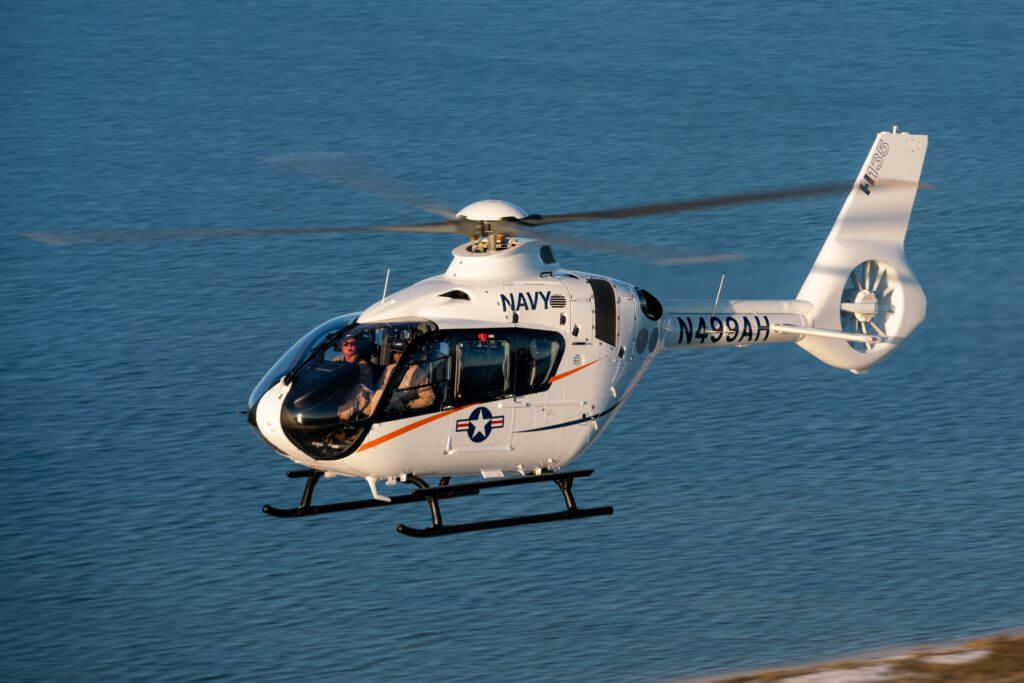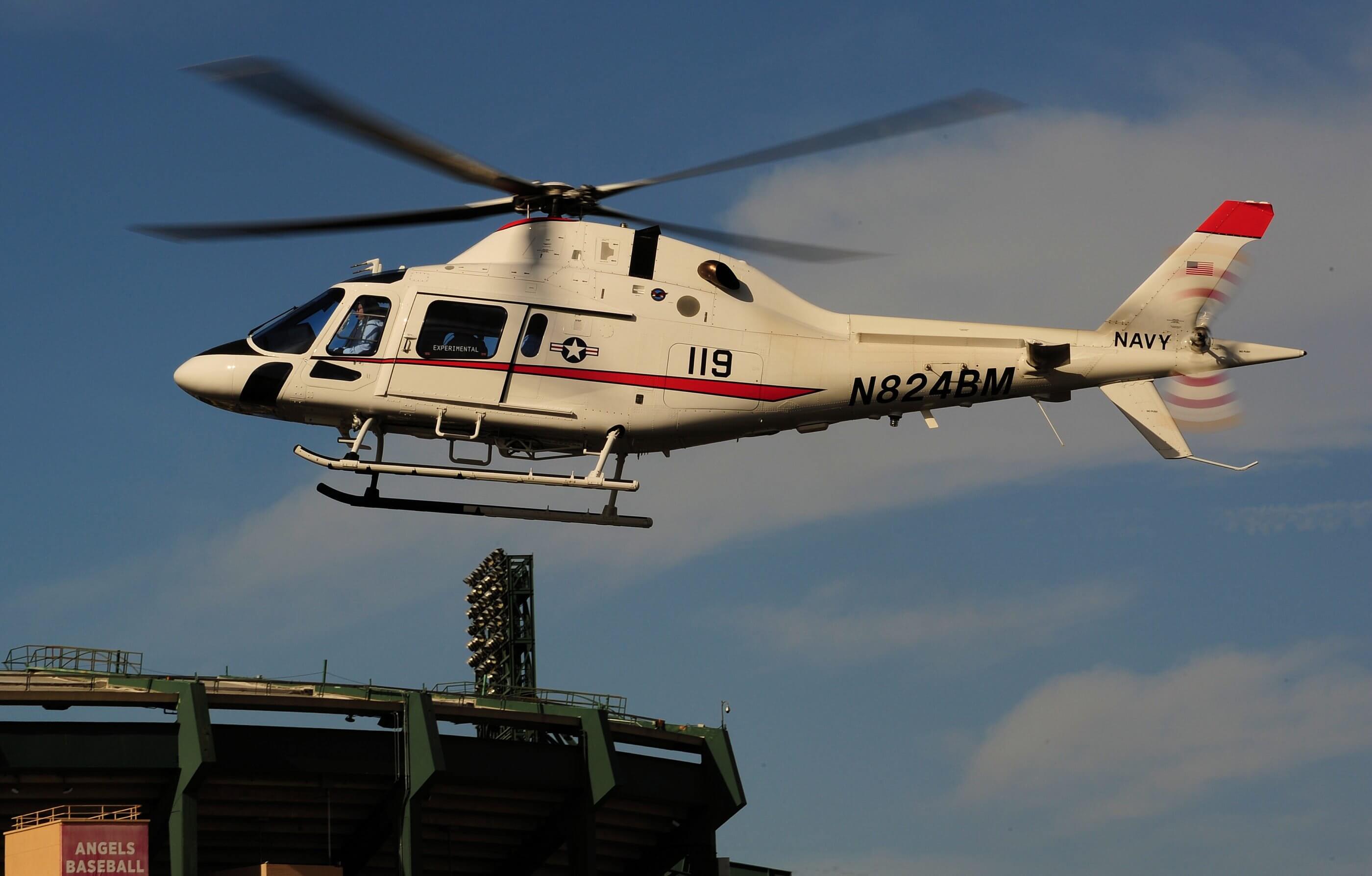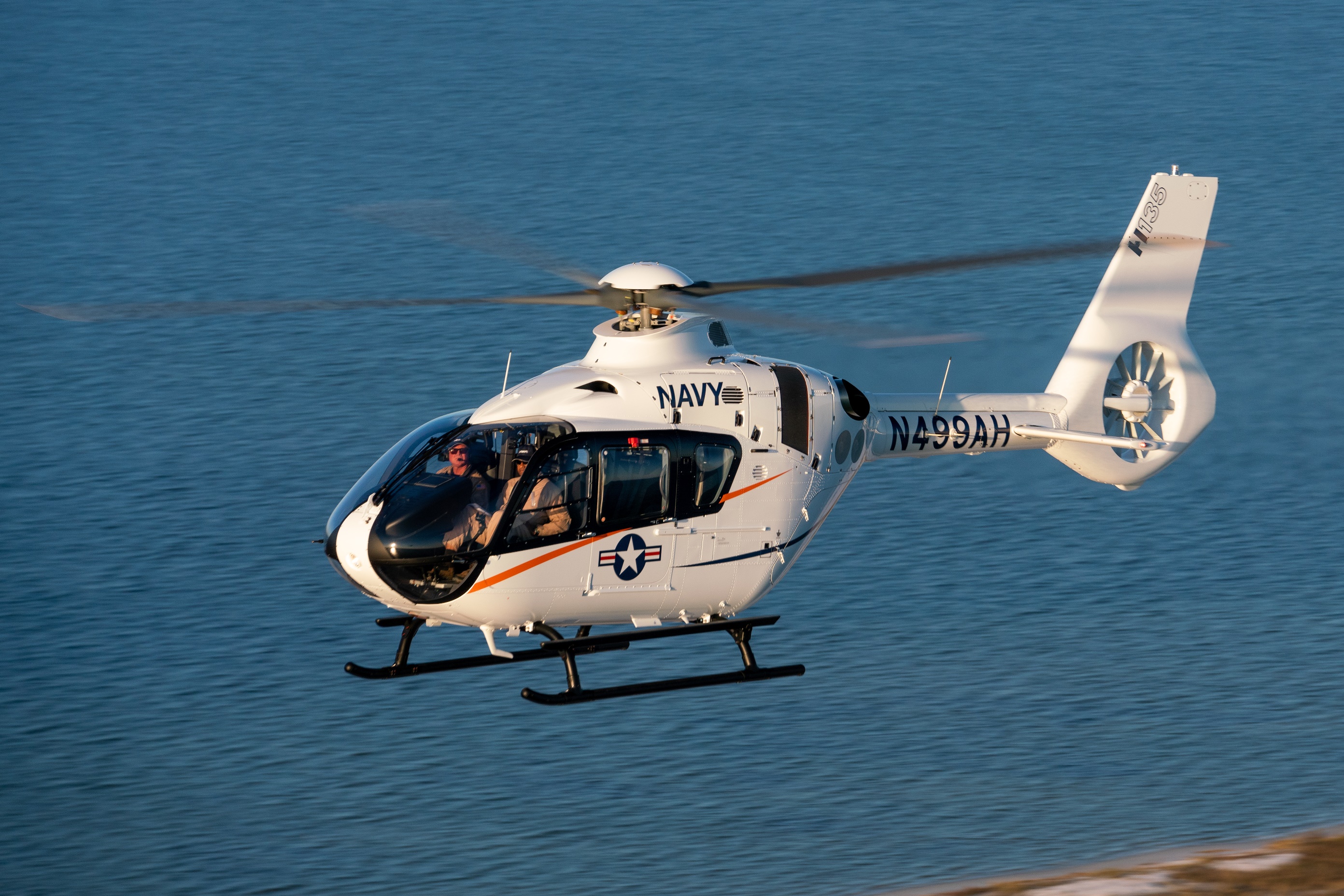Airbus Helicopters is formally protesting the U.S. Navy’s decision to have Leonardo Helicopters build its new training aircraft, halting production of the TH-73 for up to 100 days.

Airbus filed a protest with the U.S. Government Accountability Office (GAO) on Feb. 3, arguing that its twin-engine H135 was not properly considered to replace the aging TH-57 Sea Ranger. The Navy now has 30 days to file a report on why it went with Leonardo.
The Navy chose Leonardo’s single-engine TH-119 in mid-January over the Airbus H135 and incumbent Bell’s 407GXi to replace the TH-57 on which all Navy, Marine Corps and Coast Guard pilots train. A Bell spokesperson told Vertical the company “will not protest the Navy’s decision at this time.”
Airbus says its twin-engine H135 was dismissed based on “technical misunderstandings.”
“While we respect the Navy’s right to choose the asset that best meets its needs, we believe that certain technical aspects of our proposal were not assessed accurately,” an Airbus spokesperson said in a statement emailed to Vertical. “We’re confident that when these technical misunderstandings have been clarified, the Navy will be reassured that the H135 is not only the best overall value for taxpayers, but also the most suitable aircraft for the mission. The H135 is a proven military trainer with more than 355,000 training flight hours logged by 10 U.S. allies around the world.”
The H135 stood out from the field as already certified to fly under instrument flight rules (IFR) when the program began, not to mention its twin Pratt & Whitney PW206B3 engines. The powerplants made the aircraft both heavier and more expensive than its competitors, but Airbus wagered it was a lower-risk option for basic rotorcraft training and more representative of the aircraft pilots would fly once they graduated to fleet operations.
Bell, which built the legacy TH-57 Sea Ranger, had not filed a protest with GAO Feb. 3. Losing bidders have 10 days to file a protest from the time they receive a Navy debrief on the contract award.

Leonardo is building the first 32 TH-119s under a $176-million contract, but the entire scope of work for 130 aircraft is worth nearly $650 million.
The company said the Navy ran a fair competition and stands by its TH-119 as a best-value training helicopter.
“Leonardo believes the U.S. Navy executed a thorough and competitively-bid procurement process for its TH-73 helicopter program, selecting the best-value Leonardo TH-119,” a Leonardo spokesperson said in a statement. “We remain committed to the Navy’s vital training mission and program timeline. ”
GAO has up to 100 days to consider both arguments and either dismiss or uphold the protest. Leonardo is unable to perform work under its contract until the issue is decided.
The protest could disrupt the Navy’s relatively swift procurement timeline for the TH-73 if allowed to drag for more than three months. The service’s prescribed schedule sees the first TH-73 delivered by the end of the year and a production schedule of three per month until its 130-aircraft fleet is fielded in 2024. Plans are to completely retire the TH-57 by 2023.
Airbus touted its twin-engine training aircraft as a low-risk platform with a modern glass cockpit, four-axis autopilot, integrated flight management system, and certified for instrument flight rules (IFR) operation.









